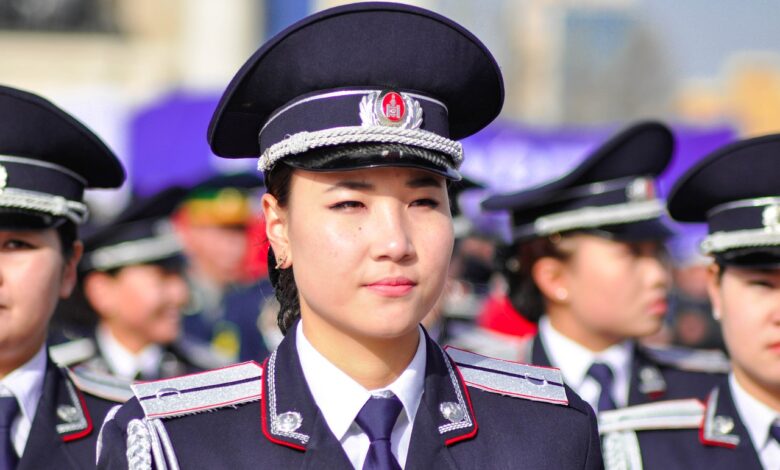Do Woman Have to Register For The Draft: Draft Registration Laws, Legal obligations

In the contemporary discourse surrounding gender equality and societal roles, a pivotal question has emerged, stirring debates on the obligations and rights of individuals based on their gender. The issue at hand centers around whether women should be mandated to register for the draft, a traditionally male-centric responsibility. As discussions on gender equality gain momentum, examining the necessity of women’s inclusion in draft registration becomes not only pertinent but also reflective of evolving societal norms and perceptions.
Selective Service Registration For Women
Selective Service Registration, historically a requirement for men in the United States, has been a subject of debate and reconsideration. The question of whether women should also be included in this mandatory registration has gained attention in recent years. Let’s delve into the key aspects of the Selective Service Registration for Women.
Background: The Selective Service System (SSS) was established in 1917 and is responsible for maintaining a list of potential draftees in case the need for a military draft arises. Traditionally, this registration requirement applied exclusively to men upon turning 18 years old.
Recent Developments: In recent years, discussions and legal actions have emerged challenging the exclusion of women from the Selective Service Registration process. The National Defense Authorization Act (NDAA) for the fiscal year 2022 addressed this issue, stating that all individuals, regardless of gender, should be required to register for the Selective Service upon turning 18.
Arguments For Inclusion: Advocates for including women argue that gender equality should extend to all aspects of civic responsibilities, including military conscription. They believe that an all-volunteer force may not be sufficient in certain situations, and having a broader pool of potential draftees ensures a more equitable and prepared national defense.
Arguments Against Inclusion: Opponents argue that the physical differences between men and women may affect combat readiness and effectiveness, questioning the practicality of drafting women into combat roles. Some also express concerns about the potential impact on military morale and cohesion.
Current Status: As of my knowledge cutoff date in January 2022, the NDAA for the fiscal year 2022 has set the stage for the inclusion of women in Selective Service Registration. However, specific implementation details and any subsequent developments may have occurred since then.
Women Draft Requirements
In recent years, discussions surrounding gender equality and inclusivity have extended to military service requirements, particularly in the context of the draft. Traditionally, mandatory military service or conscription has predominantly targeted men. However, there has been a growing discourse on whether women should also be included in draft requirements.
Current Status:
As of [Current Year], many countries maintain gender-specific draft policies, with only men being subject to conscription. However, several nations have undergone or are considering changes to include women in mandatory military service.
Countries with Women in the Draft:
| Country | Women in Draft? | Details |
|---|---|---|
| Israel | Yes | Women have been part of mandatory service since 1948. |
| Norway | Yes | Full gender integration in military conscription. |
| United States | Yes (Selective Service) | As of [Current Year], women are also required to register with the Selective Service System. |
| Sweden | Yes | Both men and women are subject to conscription. |
Ongoing Debates:
- Equality vs. Practicality: Advocates argue that including women promotes gender equality, while critics express concerns about the practicality of integrating both genders seamlessly.
- Physical Standards: Discussions also revolve around adapting physical fitness standards to accommodate the diverse capabilities of both men and women.
- Global Trends: The trend toward gender-neutral draft requirements is gaining traction globally, with ongoing debates and policy changes in various countries.
Draft Registration Laws For Females
Draft registration laws, historically applicable only to males, have undergone significant scrutiny and debate in recent times. The focus has shifted towards gender equality, prompting discussions on whether females should also be mandated to register for the draft. This issue touches upon legal, social, and cultural aspects, sparking conversations on the role of women in the defense and the broader implications for gender equality.
Current Status: As of my last knowledge update in January 2022, the United States did not require females to register for the Selective Service System, which manages draft registration. However, the landscape may have evolved since then, with ongoing discussions and potential policy changes.
Debates and Perspectives: Supporters of including females argue that gender equality demands equal responsibilities and opportunities. They emphasize the evolving roles of women in the military and society, suggesting that draft registration should reflect these changes. On the contrary, opponents may raise concerns about the physical differences between genders and question the necessity of drafting females for combat roles.
Global Context: While the United States is a focal point for this discussion, other countries have implemented various approaches. Some nations require both genders to register, while others maintain gender-specific registration. Understanding the global context provides valuable insights into the diverse approaches governments take regarding draft registration.
Future Implications: The ongoing dialogue on draft registration laws for females has potential implications for military readiness, societal perceptions, and legal frameworks. As discussions continue, it remains to be seen whether changes in policy will occur and how these changes may shape the future landscape of draft registration.
Gender Equality in Selective Service
Gender equality has been a prominent topic in various societal domains, and one area that has garnered attention is the Selective Service System. The Selective Service, in the United States, is responsible for registering citizens for potential military conscription. Historically, this process has been exclusive to males, raising questions about gender equality and its implications.
Background: The Selective Service System, established in 1917, has traditionally focused on male registration due to historical gender roles and the assumption that men would predominantly serve in combat roles. This practice has faced criticism for perpetuating gender stereotypes and excluding women from the obligation of national defense.
Current Status: As of my last knowledge update in January 2022, the Selective Service registration remains mandatory for males aged 18-25, while females are exempt. This gender-based distinction has sparked debates on the necessity of maintaining such a system in an era striving for greater gender inclusivity and equality.
Arguments for Gender Equality:
| Arguments in Favor | Counterarguments |
|---|---|
| 1. Equal Rights: Advocates argue that gender should not be a determining factor for mandatory service. | 1. Military Roles: Opponents contend that physical and combat-related differences justify the gender-specific approach. |
| 2. Changing Gender Roles: With evolving societal norms, the traditional roles of men and women in the military have become more fluid. | 2. Operational Efficiency: Some argue that a single-sex registration system is more practical for the military’s operational efficiency. |
| 3. Symbolic Equality: Extending registration to all genders symbolizes a commitment to equality and shared responsibilities. | 3. Volunteer Military: Critics question the relevance of conscription in an era where volunteer military service is the norm. |
Policy Proposals:
- Inclusive Registration: Proposals exist to amend the Selective Service system to include registration for all genders.
- Reevaluation of Military Roles: Advocates suggest a reassessment of military roles and the inclusion of women in combat positions to justify equal registration.
- Voluntary vs. Mandatory Service: A broader discussion involves reconsidering the need for conscription in an era where volunteer military service is prevalent.
Legal Obligations For Women in The Draft
In recent years, discussions surrounding gender equality and inclusivity have extended to various facets of society, including military service. Historically, the draft, or conscription, has primarily applied to men. However, with evolving societal norms and changing perspectives on gender roles, the legal obligations for women in the draft have become a subject of considerable debate.
Current Legal Landscape: As of my last knowledge update in January 2022, the legal obligations for women in the draft vary across countries. In the United States, for instance, the National Defense Authorization Act for Fiscal Year 2021 mandated the inclusion of women in the Selective Service System. This marked a significant shift, acknowledging the need for gender-neutral conscription policies.
Challenges and Controversies: The inclusion of women in the draft has sparked both support and opposition. Advocates argue that gender equality demands equal responsibilities, including military service obligations. On the other hand, opponents raise concerns about the physical demands of combat roles and question the necessity of conscripting women.
International Perspectives: While the United States has taken steps toward gender-inclusive conscription, other countries have different approaches. Some nations have long allowed women to serve in the military voluntarily but may not have explicit provisions for their inclusion in the draft. Understanding these global perspectives provides a comprehensive view of the complexities surrounding legal obligations for women in the draft.
Ongoing Developments: Given the dynamic nature of societal attitudes and legal frameworks, the landscape regarding women’s obligations in the draft may continue to evolve. Monitoring legislative changes, public opinion shifts, and international developments is crucial to staying informed on this topic.




I was surprised to learn that women are not required to register for the draft in the United States. It seems like an important discussion about gender equality in military service.